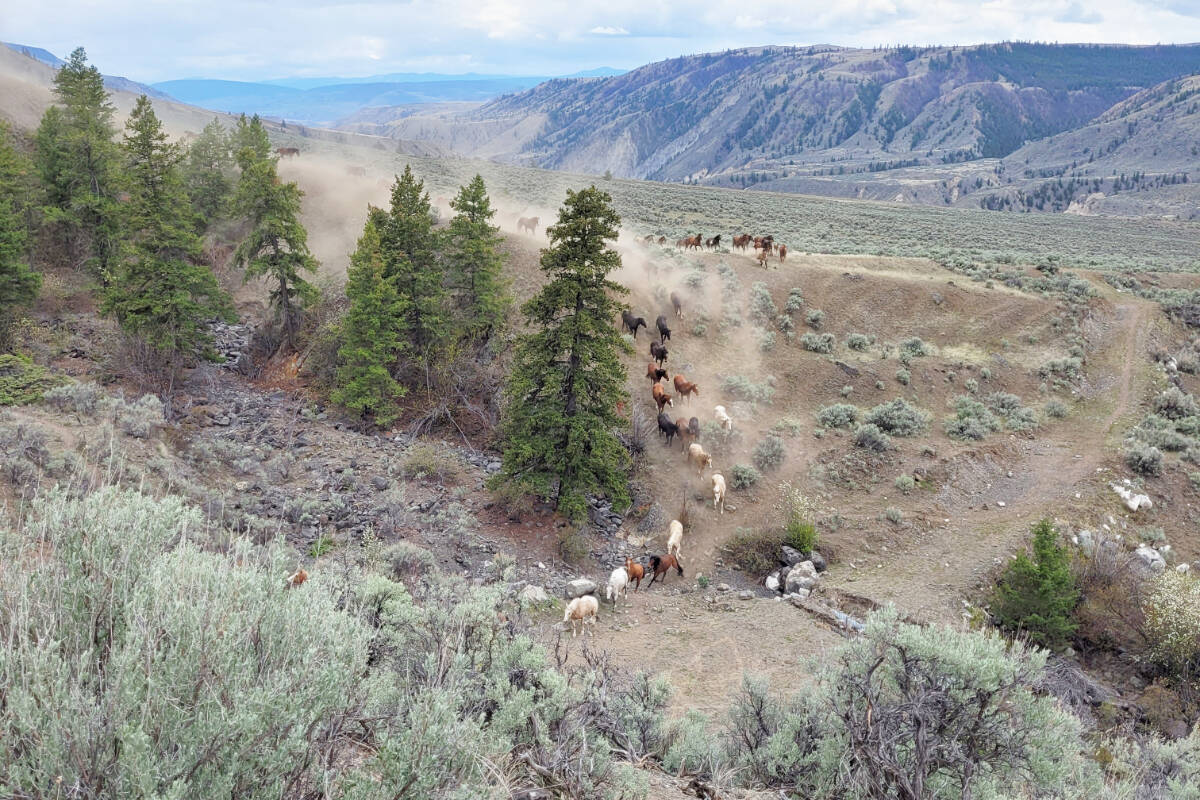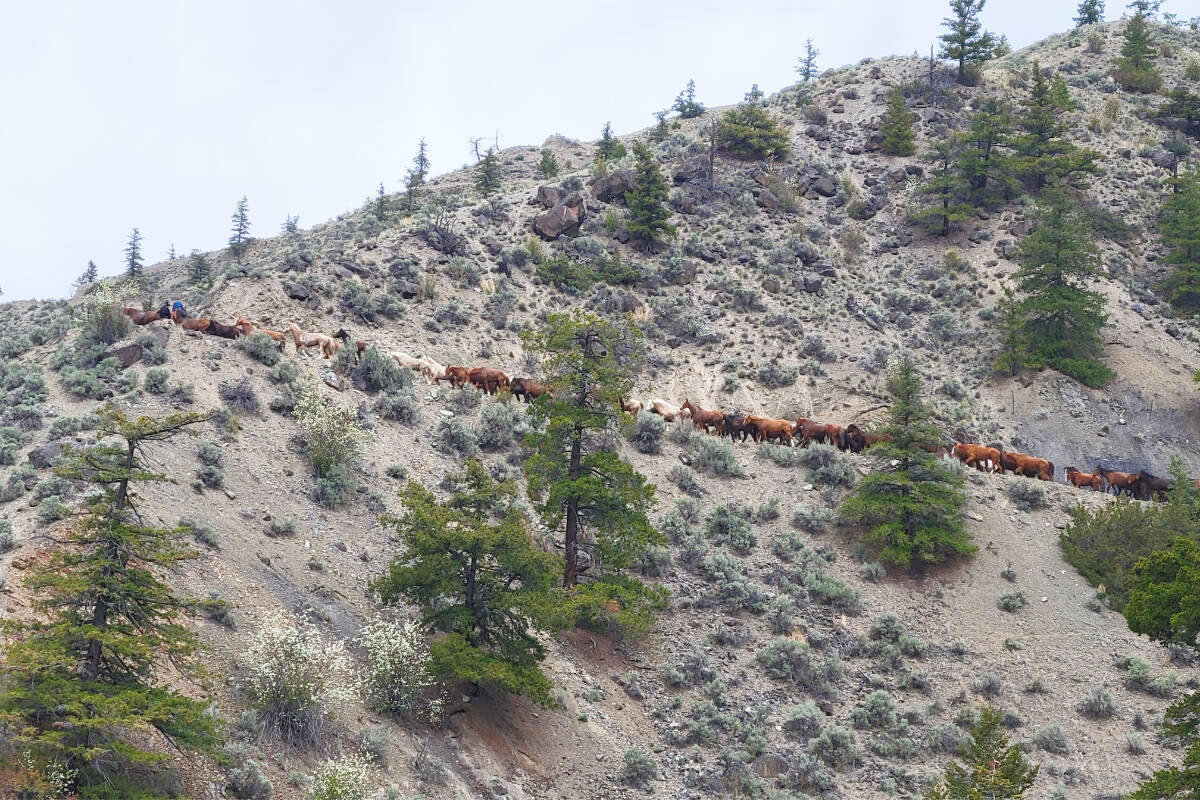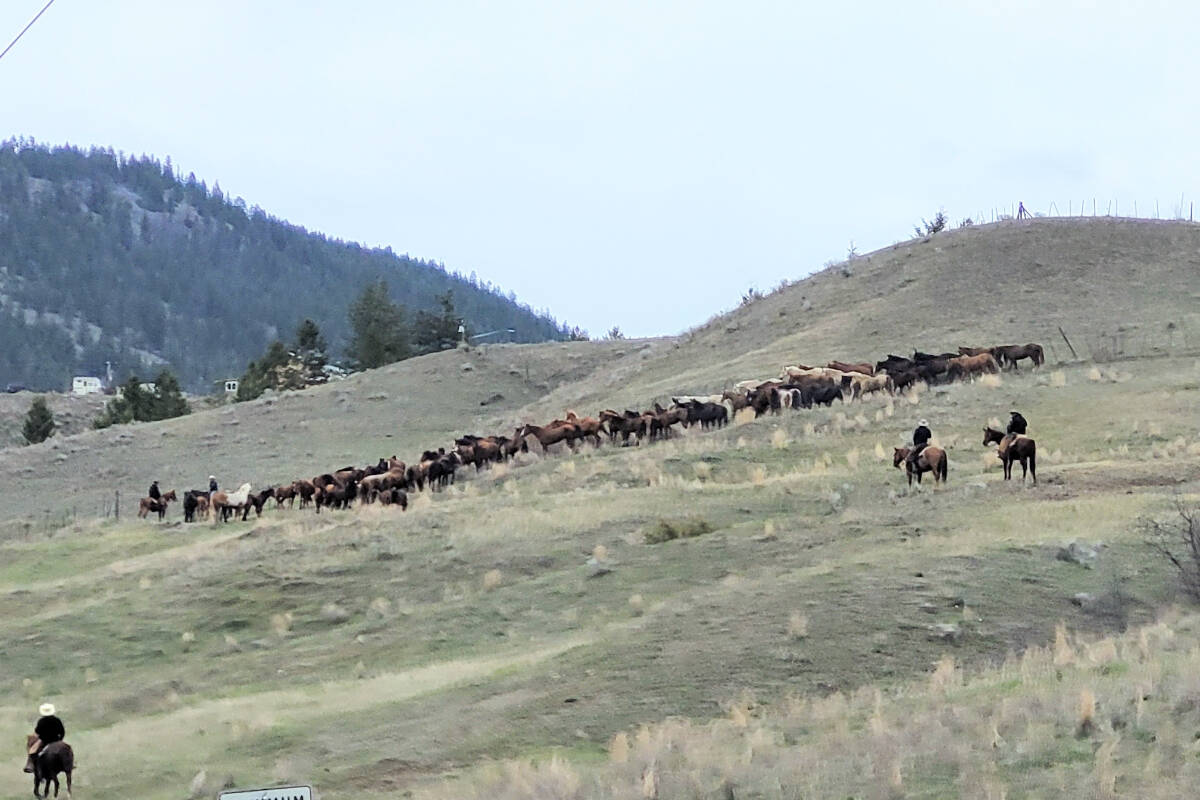Each year, Esk’etemc (formerly Alkali Lake First Nation) band member horses are put out to range for the winter, but the long-standing tradition could be at risk with fewer riders to help each year.
The seasonal routine has horses rounded up and run as a group by riders on horseback out to Wycotte Flats, where the snow loading is not as deep and the river runs along one side. The horses can feed themselves through the winter there.
Then in the spring, a reverse happens, and riders go out on horseback to retrieve the horses once again.
Gord Chipman went to witness the event and was quick to credit the organizer behind it, Bill Chelsea.
Chipman said in the fall the group takes about 120 to 150 horses and then in the spring, the horses are in smaller bands out on the flats and get brought back incrementally.
The process of bringing them back to be closer to the reserve and their owners goes fairly quickly, he said, as “a lot of (the horses) have been doing it year after year.”
This means when the seven or eight riders on horseback show up, the horses know this means it is time to return to home range and green grass and they begin to head back to the reserve automatically.
The ranged horses race back towards Esk’etemc and the riders have to try and keep up.
Owners and helpers meet the small group of horseback riders and the herd at the road with four-wheelers and other vehicles to help escort the group for the final push.
Horses can be checked for health, they see which ones need branding and see if there are new foals or pregnant mares. Then the horses are also accessible for riding or training as well.
The horse roundup itself is a traditional annual event, but one which needs fresh leaders to take it on.
Bill Chelsea is 76 years old and Chipman says Chelsea wants to pass the torch to younger riders to continue the annual migration of the community’s horses.
“This could be a dying tradition,” said Chipman.
Read more: Robbins returns as chief of Esk’etemc First Nation
ruth.lloyd@wltribune.com
Like us on Facebook and follow us on Twitter
CaribooFirst NationshorseIndigenousWilliams Lake





